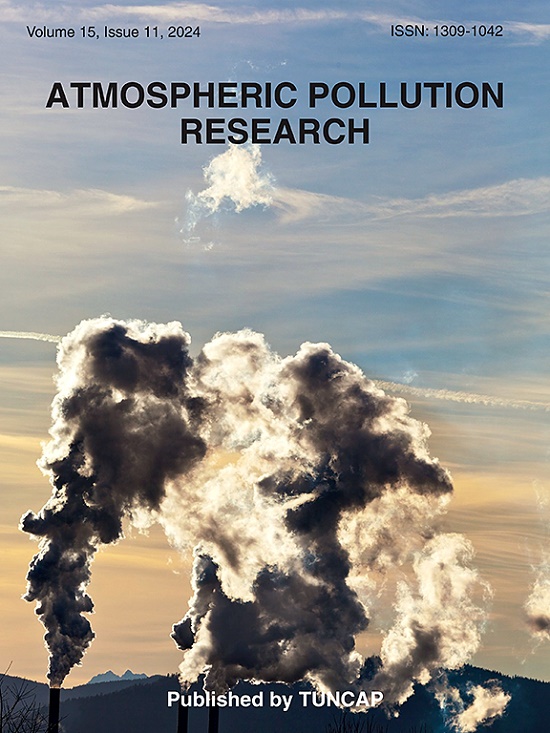The influence of local and regional sources on concentrations of fine particulate matter in Delhi
IF 3.9
3区 环境科学与生态学
Q2 ENVIRONMENTAL SCIENCES
引用次数: 0
Abstract
Delhi is one of the world's most polluted cities, and hence pollution control is a very high priority. A key aspect of a cost-effective strategy is to differentiate emissions from local sources from pollution arising from regional transport. Detailed chemical characterization of atmospheric fine particulate matter (PM2.5) has been made at two sites in three seasons with a view to source attribution. Chloride ion (Cl−) concentrations make an exceptional contribution at both sites in winter, reaching a maximum of 76 and 97 μg m−3 during the winter campaign at the central and suburban sites, respectively. Differing diurnal patterns of Cl− were observed between the seasons, indicating contrasts in sources and secondary chemical processes between seasons. Inter-site comparisons show high correlation between secondary inorganics (NO3−, SO42−, and NH4+) in the winter and pre-monsoon, indicating the influence of regional processes for their formation at both sites, while for Cl− and other measured ions (Na+, Ca2+, Mg2+, PO42− and K+), local influences were found to be dominant through inter-site comparisons and ventilation coefficient analyses. A significant contribution of local sources to secondary inorganic compounds and Organic Matter mass within PM2.5 in the post-monsoon period was observed, implying that the regional sources (such as crop residue burning, often indicted as the cause of poor air quality) are not the sole driver for high PM2.5 loadings in Delhi in autumn, contrary to previous studies.

本地和区域来源对德里细颗粒物浓度的影响
德里是世界上污染最严重的城市之一,因此污染控制是非常重要的。成本效益战略的一个关键方面是将当地来源的排放与区域运输产生的污染区分开来。在三个季节的两个地点对大气细颗粒物(PM2.5)进行了详细的化学表征,以确定其来源归属。氯离子(Cl−)浓度在冬季对两个站点的贡献都非常突出,在冬季运动期间,中心和郊区站点的氯离子浓度分别达到76和97 μg m−3。不同季节Cl−的日变化模式不同,表明季节之间Cl−的来源和次生化学过程存在差异。站点间比较显示,冬季和季风前的二次无机物(NO3−、SO42−和NH4+)之间具有高度相关性,表明区域过程对它们在两个站点的形成都有影响,而对于Cl−和其他测量离子(Na+、Ca2+、Mg2+、PO42−和K+),通过站点间比较和通风系数分析发现,局部影响占主导地位。观察到,在季风后时期,当地来源对PM2.5中的次级无机化合物和有机物质量有重要贡献,这意味着区域来源(如作物秸秆燃烧,通常被认为是空气质量差的原因)并不是德里秋季PM2.5高负荷的唯一驱动因素,这与之前的研究相反。
本文章由计算机程序翻译,如有差异,请以英文原文为准。
求助全文
约1分钟内获得全文
求助全文
来源期刊

Atmospheric Pollution Research
ENVIRONMENTAL SCIENCES-
CiteScore
8.30
自引率
6.70%
发文量
256
审稿时长
36 days
期刊介绍:
Atmospheric Pollution Research (APR) is an international journal designed for the publication of articles on air pollution. Papers should present novel experimental results, theory and modeling of air pollution on local, regional, or global scales. Areas covered are research on inorganic, organic, and persistent organic air pollutants, air quality monitoring, air quality management, atmospheric dispersion and transport, air-surface (soil, water, and vegetation) exchange of pollutants, dry and wet deposition, indoor air quality, exposure assessment, health effects, satellite measurements, natural emissions, atmospheric chemistry, greenhouse gases, and effects on climate change.
 求助内容:
求助内容: 应助结果提醒方式:
应助结果提醒方式:


